OFFERING 10% DISCOUNT ON TRAINING TO HONORABLY DISCHARGED VETERANS FOR BOTH EMPLOYERS AND INDIVIDUALS
1. Incident Reporting and Investigation
- Responsibility for reporting
- Definition of an incident to report
- How to report an incident
- Types of incidents
- Purpose of incident investigation
- Explain why incidents need investigation
2. Accident Prevention Signs and Tags
- Types and meaning of signs and tags
- Definition and design
3. Hand Safety
- General safety rules “Right tools for the job”
- Types of cutting tools , Pocket Knife, Machete, Bush Knife, Hatchets
- Causes of hand injuries
4. Material Handling
- Materials Handling Equipment
- Forklift Safety
- Cranes, Rigging & Tag Lines
- Working with Hand tools
- Cheater Bar/Pipe
- Personal Lifting Introduction
- Why back injuries occur – Back Injury Prevention
- Lifting Safely – Safety Tips for Lifting
- Alternatives to Lifting
5. Behavioral Safety
- Overview
- Roles and Responsibilities – Behavior Based Safety
- Making an Observation
6. First-Aid/CPR/AED Considerations
- Respond only to level trained and know who is trained
- Location of Emergency Contact Numbers and Equipment
- Bloodborne Pathogens
7. Confined Space
- Hazards of Confined Spaces
- Roles and Responsibilities
- Categories: Permit Required vs. Non-Permit Required
8. Lockout/Tagout
- Overview of Lockout/Tagout
- Identifying Hazardous Energy
- Roles and Responsibilities
- Procedures – Lockout Only, Tagout Only, Group Lockout, Removal of Locks and Tags
9. Drug and Alcohol / Substance Abuse
- Government Regulations / Company Requirements
- Testing
- Supervisor Training Requirements: Reasonable Suspicion
- Employee Awareness: Effects and Consequences
10. Hazard Communication
- Overview of Hazard Communication
- Identification of Chemicals: MSDS, Labels and Warning, Chemical Inventory
- Training Requirements
11. Electrical Safety
- Overview of Electrical Safety
- Causes of Electrical Accidents
- Results of Unsafe Work Practices
- Energized vs. De-energized
- Working Near Exposed De-energized Parts
- Working Near Energized Equipment
- Overhead Line Safety
- Portable Electrical Equipment
- Inspecting Welding Leads / Electrical Cords / GFCI
- Electrical PPE
12. Intervention / Stop Work Authority
- Overview
- Management Leadership / Support of Intervention
- Describe an individual’s responsibilities to do interventions
- Explanation of how interventions are used (Examples)
13. Fire Prevention and Portable Fire Extinguishers
- Overview of Fire Protection, Prevention, and Detection
- Respond only to level trained and know who is trained
- Elements/Causes of Fire
- Fire Classification
- Extinguishing Methods / Types of Extinguishers
14. Walking Working Surfaces
- Overview
- Guarding Floor and Wall Openings and Holes
- Housekeeping
- Scaffolding/Ladders
- Stairways/Handrails
15. Job Safety Analysis / Pre-Job Planning
- Overview
- Roles and Responsibilities of Hazard Identification
- JSA Elements (Job steps, Hazard Identification, Mitigation)
16. Personal Protective Equipment, Respiratory
- PPE Overview
- Eliminate – Control – Protect
- Selection, Fit, Adjustment of PPE
- Eye and Face Protection
- Head, Foot and Hand Protection
- Respiratory Requirements – Types of Respirators
- Hearing Protection
- Protective Clothing and FRC
17. Prevention of Workplace Violence
- Overview
- Responsibilities – Recognition and Notification
18. Working at Heights
- Overview
- Only work to your level of training
- Responsibilities – Prevention of dropped objects and falls
- Personal Protective Equipment and Inspection Requirements
- Equipment for working at heights (Manlifts, Fall Protection Systems)
19. Permit To Work
- Overview
- Roles and Responsibilities
- Types of Permits – Examples: Confined Space, Hot Work, LOTO, etc
20. Driver Safety / Transportation Safety
- Overview / Statistics
- No Cell-phone use while driving / Driving Distractions
- Valid Driving Licenses / Certifications / Endorsements
- Adverse Weather – Road Conditions – Wildlife
- Fatigue
- Vehicle condition/inspections
- Journey Management
- Backing/Parking/Location Hazards
- Loading Securement and Off-loading
- Seat belt usage
- Driving under the influence
21. Environmental
- Federal and State Regulations & Compliance and Reporting
- Roles and Responsibilities
- Response and Reporting of discharges, leaks & spills
- Minimize waste
- All wastes go in specific containers
- Overview of HAZWOPER
22. Excavation - Trenching & Shoring
- Overview
- Identification of Underground Hazards / ONE CALL – 811
- Levels of Training / Competency Requirements
- Safe Work Practices / Procedures / Permits
- Hazards Recognition and Mitigation
- Use of Personal Protective Equipment
- Hazardous Atmospheres
- Emergency Response Plans
23. Industrial Hygiene / Occupational Health
- Overview
- Roles and Responsibilities
- Exposure Types – Skin contact, Inhalation, Ingestion, Radiation (Ionizing & Non-
- Ionizing), Noise, etc.
- Common Hazards – Benzene, Lead, H2S, CO2, NORM, Mercury, Diethanolamine,
- Hexavalent chromium, methanol, welding fume, N2, Fibers (Asbestos, Mineral, etc.),
- Fumes, Liquids, Weather, Dust, Biological, etc.
- Monitoring and Mitigation
- Thermal Stress
24. Site Specific Hazards and Emergency Evacuation
- Banned Items – Weapons i.e. Firearms, ammunition, clubs, etc., Illegal drugs, Alcohol,
- Lighters/matches, Explosives
- New Personnel – Short Service Program (Identification, Mentoring, etc.)
- Reporting to Work – Fitness for Duty
- Emergency Planning/Response (alarms, muster areas, etc.)
- Wildlife
- Weather Conditions – Lightning, Windstorm, Hurricane, Tornado, UV exposure, Snow &
- Ice, Flooding, etc.
- Simultaneous Operations / Communication
